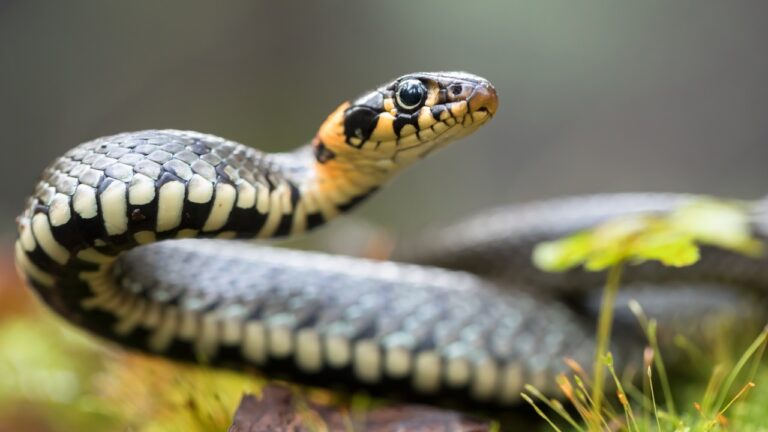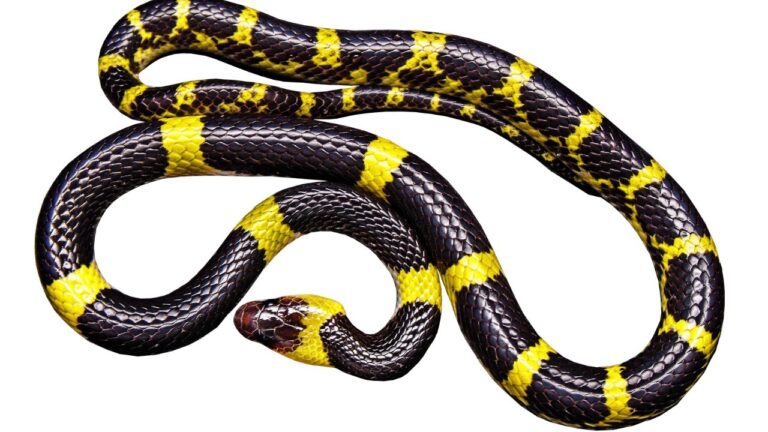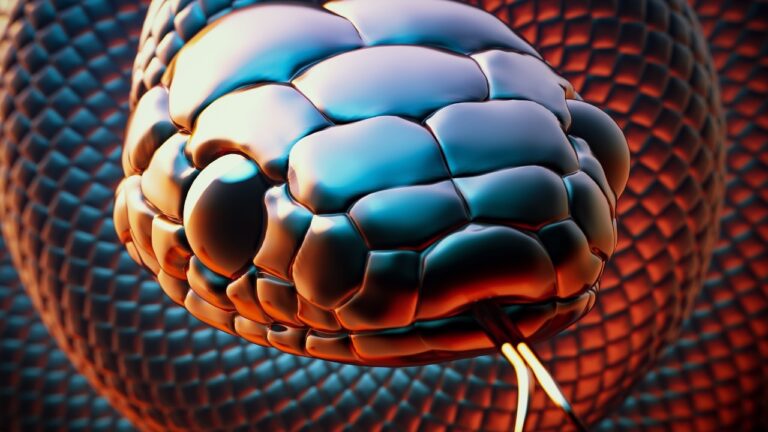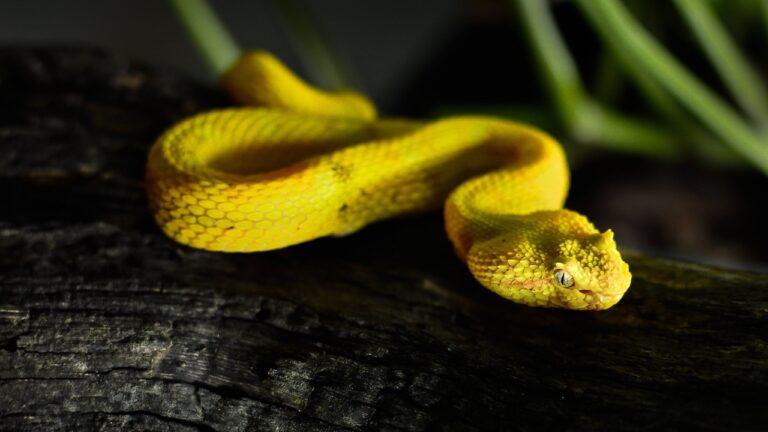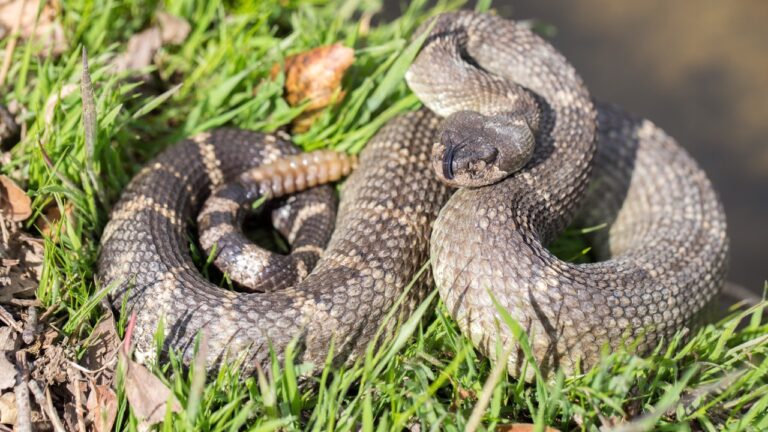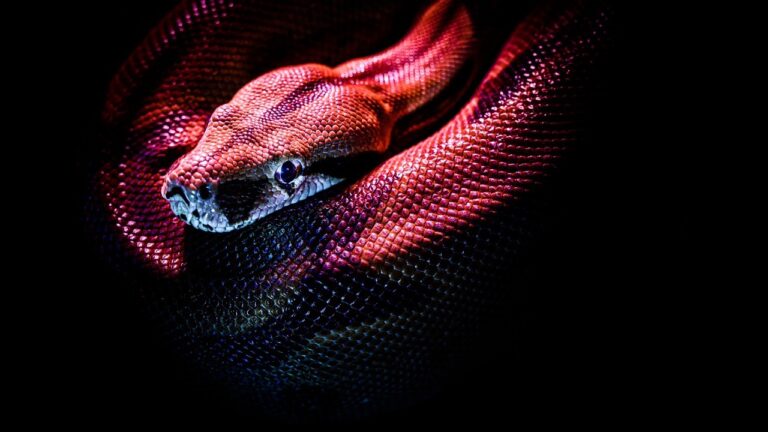Snake Feeding: Essential Nutrition Basics for Reptile Enthusiasts
Importance of proper nutrition for snakes
When it comes to keeping snakes as pets, providing proper nutrition is of utmost importance. Just like any other living creature, snakes require a well-balanced diet to thrive and maintain their health. A nutritious diet not only ensures their survival but also contributes to their overall well-being.
Snake nutrition is a complex subject that requires careful consideration. Snakes are carnivorous by nature, meaning they primarily feed on other animals. Understanding their dietary needs and providing them with the right nutrients is crucial for their growth, development, and longevity.
Without a doubt, the key to a healthy snake lies in its diet. Feeding your snake a well-rounded and appropriate diet is the cornerstone of responsible reptile care. Neglecting their dietary requirements can lead to a myriad of health issues, including malnutrition, obesity, and even death. Therefore, it is essential to educate yourself on the intricacies of snake feeding to ensure the well-being of your scaly companion.
In this comprehensive guide, we will delve into the fascinating realm of snake nutrition, covering everything from their carnivorous nature and types of prey to feeding techniques and common feeding issues. Whether you are a seasoned reptile enthusiast or a novice snake owner, this article will equip you with the knowledge and understanding you need to provide your snake with a nourishing and fulfilling diet.
But first, let us explore the importance of proper nutrition for snakes, shedding light on why it is vital to prioritize their dietary needs. By the end of this article, you will have a deeper understanding of the critical role nutrition plays in the lives of our slithering friends, and you will be empowered to make informed decisions when it comes to their feeding regimen. So, let’s embark on this exciting journey into the world of snake nutrition together!
Understanding Snake Diets
When it comes to understanding the dietary needs of our slithery friends, it’s important to recognize their carnivorous nature. Snakes are true predators, relying on a diet of other animals to sustain their nutritional requirements. This unique aspect of their biology sets them apart from herbivores or omnivores, as they have evolved to thrive on a diet exclusively composed of meat.
But what exactly constitutes an appropriate meal for a snake? Well, the answer lies in the diverse array of prey available in the wild. Snakes have adapted to consume a wide range of animals, including rodents, birds, reptiles, and amphibians. Each of these prey types offers a distinct nutritional profile, allowing snakes to obtain the essential nutrients they need to survive and thrive.
In the world of snake diets, size matters. Snakes have the remarkable ability to consume prey that is often much larger than their own head, thanks to their unique jaw structure. However, it’s important to note that snakes are not indiscriminate gluttons. They carefully select their prey based on size and availability, ensuring that they obtain the optimal balance of nutrients required for their growth and overall health.
While snakes can consume prey that is larger than themselves, they also have the flexibility to adjust their prey size based on their individual needs. For example, a hatchling snake would require smaller prey items, such as pinky mice or small lizards, whereas an adult snake might tackle larger prey like rats or rabbits. This ability to adapt their prey size is crucial for maintaining a healthy and balanced diet throughout their lifespan.
When considering the diversity of snake diets, it’s worth noting that some species exhibit a preference for certain types of prey. For instance, arboreal snakes may primarily consume birds or tree-dwelling rodents, while ground-dwelling snakes might prefer to feast on small mammals or reptiles. This specialization in prey selection is a testament to the incredible adaptability of snakes and their ability to thrive in a variety of ecological niches.
Understanding the intricacies of snake diets is essential for reptile enthusiasts who want to provide their scaly companions with the best possible nutrition. By recognizing their carnivorous nature and appreciating the importance of a varied diet, we can ensure that our snakes receive the proper nourishment they need to lead healthy and fulfilling lives.
Feeding Frequency
Proper feeding frequency is crucial to ensure the health and well-being of your snakes. Snakes have unique dietary requirements, and understanding how often to feed them is essential for their nutritional needs. In this section, we will explore the factors that affect feeding frequency and provide guidelines for determining a suitable feeding schedule for your slithering companions.
Factors Affecting Feeding Frequency
Several factors influence how often snakes should be fed. These include the species of snake, age, size, metabolism, and overall health. Each snake has its own unique dietary requirements, so it’s important to consider these factors when determining their feeding frequency.
Species plays a significant role in determining how often a snake should be fed. Some snake species have higher metabolisms and require more frequent meals, while others have slower metabolisms and can thrive on less frequent feedings. For example, arboreal snakes, like the Green Tree Python, tend to have faster metabolisms and may require more frequent meals compared to their terrestrial counterparts, such as the Ball Python.
Age and size are also important considerations. Growing snakes have higher nutritional demands and may require more frequent feedings to support their rapid growth. As snakes reach adulthood and their growth slows down, their feeding frequency can be adjusted accordingly.
Metabolism and overall health are additional factors to take into account. Snakes with faster metabolisms may require more frequent meals to maintain their energy levels, while snakes with slower metabolisms may be prone to weight gain if overfed. Additionally, snakes recovering from illness or injury may require more frequent and smaller meals to aid in their recovery.
Guidelines for Determining Feeding Schedule
Establishing a proper feeding schedule for your snake is crucial for their overall well-being. Although the specific feeding frequency will vary depending on the factors mentioned above, here are some general guidelines to help you determine a suitable feeding schedule:
-
Research the dietary requirements of your snake species: Different snake species have different dietary needs. Understand the natural diet of your snake and tailor their feeding schedule accordingly. You can find valuable information on snake diets at Serpent Suppers.
-
Consider the snake’s age and size: Growing snakes generally require more frequent feedings to support their development. As they reach adulthood, their feeding frequency can be reduced. Consult a reputable source or a herpetologist for specific guidelines on feeding schedules for different age groups.
-
Monitor your snake’s body condition: Regularly assess your snake’s body condition to ensure they are not over or underweight. Adjust the feeding frequency accordingly to maintain a healthy body weight. If you’re unsure about your snake’s body condition, consult a veterinarian or an experienced reptile keeper for guidance.
-
Observe your snake’s feeding response: Pay attention to your snake’s appetite and feeding response. If they consistently refuse meals or show disinterest, it may indicate that the current feeding frequency is too frequent or infrequent. Adjust the schedule accordingly to accommodate their preferences and needs.
-
Seek professional advice: If you’re unsure about the ideal feeding schedule for your snake, consult a veterinarian or an experienced reptile keeper. They can provide valuable insights and personalized recommendations based on your snake’s specific needs.
Remember, maintaining a healthy feeding schedule is crucial for the overall health and longevity of your snakes. By considering the factors that affect feeding frequency and following these guidelines, you can ensure that your scaly friends receive the nutrition they need to thrive. For more information on snake nutrition, visit Serpent Suppers.
Prey Selection
When it comes to feeding your beloved snake, one of the most crucial decisions you’ll have to make is choosing the right prey. The size, type, and condition of the prey can significantly impact your snake’s overall health and well-being. In this section, we will explore the importance of selecting the appropriate prey size, the merits of live versus pre-killed prey, and the value of introducing variety into your snake’s diet.
Choosing the Right Prey Size
Snakes come in a diverse range of sizes, from the petite and slender to the impressively robust. Therefore, it’s essential to select prey that is appropriate for your snake’s specific size and species. Feeding your snake prey that is too large can lead to difficulties with digestion and potential injury, while prey that is too small may not provide the necessary nutrients for optimal growth and development.
To determine the right prey size for your snake, it’s crucial to consider the diameter of your snake’s body. Generally, the prey you choose should be no larger than the widest part of your snake’s body. This ensures that your snake can swallow its prey comfortably and digest it efficiently, without putting undue stress on its digestive system.
Live vs. Pre-Killed Prey
The debate between live and pre-killed prey has long been a topic of discussion among reptile enthusiasts. While both options have their merits, it’s essential to weigh the pros and cons before making a decision.
Live prey offers a more natural hunting experience for your snake, stimulating its instinctual behaviors and providing mental and physical enrichment. However, feeding live prey carries inherent risks. Prey animals have been known to fight back, potentially causing injury to your snake. There is also the possibility of parasites or diseases being transmitted from the prey to your snake. Therefore, extra caution and supervision are necessary when opting for live prey.
On the other hand, pre-killed prey can be a safer alternative. It eliminates the risk of injury to your snake during the feeding process and reduces the chances of introducing parasites or diseases. Pre-killed prey is also more convenient, as it can be easily stored in your freezer until feeding time. However, it’s important to note that some snakes may be reluctant to accept pre-killed prey, as they are instinctually attracted to the movement of live prey. In such cases, you may need to employ various feeding techniques to entice your snake to eat.
Variety in Prey Types
In the wild, snakes have the opportunity to encounter a wide array of prey animals. This diversity in their diet allows them to obtain a range of essential nutrients necessary for their overall health. Therefore, introducing variety into your snake’s diet is crucial for ensuring it receives a balanced and nutritious meal.
Consider offering your snake a selection of prey types, such as mice, rats, chicks, or even small rabbits, depending on the size and species of your snake. Each prey type possesses its own nutritional profile, providing your snake with a diverse array of proteins, fats, and other essential nutrients. By offering a variety of prey, you can mimic the natural diet of wild snakes and promote optimal nutrition.
Remember, your snake’s nutrition is paramount to its well-being and longevity. The prey you choose plays a vital role in providing your snake with the necessary nutrients for growth, energy, and overall health. So, take the time to carefully select the right prey size, consider the advantages and disadvantages of live versus pre-killed prey, and embrace the benefits of offering a variety of prey types.
Continue reading about snake feeding in our snake feeding guide to learn more about essential nutrients, feeding schedules, and common feeding issues.
Feeding Techniques
When it comes to feeding your snake, there are various techniques you can use to ensure they receive their meals in a safe and controlled manner. Each method has its own advantages and considerations, so let’s explore the three main feeding techniques commonly used by snake enthusiasts: hand-feeding, tong feeding, and assist-feeding.
Hand-Feeding
Hand-feeding involves directly offering the prey item to your snake using your hand or a pair of feeding tongs. This method allows for a more interactive experience between you and your snake, as well as the opportunity to closely monitor their feeding behavior.
To hand-feed your snake, gently hold the prey item with a pair of feeding tongs and present it near the snake’s head. Caution is advised when using this method, especially if your snake is particularly aggressive or has a tendency to strike unpredictably. Ensure that you have a firm grip on the prey item to prevent accidental bites.
It’s worth noting that hand-feeding can be a useful technique for snakes that are reluctant to eat or have specific dietary preferences. By offering the prey item directly, you can entice your snake and increase their chances of accepting the meal.
Tong Feeding
Tong feeding, also known as forceps feeding, is another popular method used to safely offer prey to your snake. This technique involves using a pair of specialized feeding tongs to hold the prey item and present it to your snake.
To tong feed your snake, carefully grip the prey item with the feeding tongs, making sure to hold it securely. Position the tongs near the snake’s head and wait for them to strike and constrict the prey. Once the snake has successfully captured the prey, gently release your hold on the tongs, allowing the snake to consume the meal.
Tong feeding provides a level of distance and control between you and your snake, minimizing the risk of accidental bites. It is particularly useful for larger snakes or those with aggressive feeding behaviors. However, it’s important to avoid pulling or tugging on the prey item once the snake has taken hold, as this can lead to injury.
Assist-Feeding
Assist-feeding, also known as tube-feeding, is a technique used when a snake is unable to feed on its own. This may be due to illness, injury, or other health conditions that affect their ability to consume prey. In such cases, assist-feeding allows you to provide the necessary nutrients directly to the snake.
Assist-feeding should only be attempted under the guidance of a veterinarian or experienced reptile specialist. It involves using a feeding tube or syringe to carefully introduce a liquid or blended food into the snake’s digestive system. This method requires precision and knowledge of the snake’s anatomy to avoid causing harm.
The goal of assist-feeding is to provide essential nutrition and support the snake’s recovery until they can resume normal feeding. It is a temporary measure and should not be relied upon as a long-term solution.
Remember, each snake is unique in its feeding preferences and habits. It’s essential to consider the individual needs of your snake when choosing a feeding technique. By understanding the pros and cons of hand-feeding, tong feeding, and assist-feeding, you can provide the best care for your scaly friend.
Continue reading about snake feeding techniques and discover more about the importance of proper nutrition for your snake’s health and well-being.
Internal links:
Nutritional Considerations
When it comes to the health and well-being of your beloved snakes, nutritional considerations play a vital role. Providing the right balance of nutrients is essential for their growth, development, and overall vitality. In this section, we will explore the essential nutrients that snakes require, the importance of vitamin and mineral supplements, as well as their hydration and water requirements.
Essential Nutrients for Snakes
Just like any other living creature, snakes have specific dietary needs. These remarkable reptiles thrive on a diet that primarily consists of protein. Protein is a crucial macronutrient that supports muscle development, tissue repair, and overall growth. Snakes are carnivorous by nature, meaning they rely on a diet of other animals to meet their nutritional requirements.
To ensure your snakes receive a well-rounded diet, it is important to offer them a variety of prey types. This can include rodents, birds, and even insects, depending on the species and size of your snake. By providing a diverse range of prey, you can ensure that your snake receives a wide array of essential nutrients, including vitamins and minerals.
Vitamin and Mineral Supplements
While a varied diet is essential, it can be challenging to guarantee that your snakes are getting all the necessary vitamins and minerals solely from their prey. To bridge this gap, vitamin and mineral supplements can be a valuable addition to their diet.
Supplements come in various forms, such as powders or liquid solutions, and are specifically formulated to provide the additional nutrients that may be lacking in their natural prey. These supplements typically contain a blend of vitamins, such as vitamin A, vitamin D, and vitamin E, as well as essential minerals like calcium and phosphorus. Incorporating these supplements into your snake’s feeding routine can help ensure they receive a well-rounded and balanced diet.
Hydration and Water Requirements
Water is a fundamental element of any living organism’s diet, and snakes are no exception. Proper hydration is essential for their overall health and physiological functions. Snakes obtain most of their hydration from their prey, as the moisture content in the prey helps fulfill their water requirements. However, it is still crucial to provide a fresh and clean water source for your snakes to drink from.
Make sure to regularly check their water bowl and refill it as needed. Snakes may not drink water as frequently as other animals, but it is important to have it readily available for them. Adequate hydration supports proper digestion, helps maintain healthy skin and scales, and ensures overall well-being.
By understanding the nutritional considerations specific to snakes, you can provide your scaly companions with a healthy and fulfilling diet. Remember, a balanced diet, supplemented with the necessary vitamins and minerals, along with proper hydration, will contribute to the longevity and vitality of your snakes.
Continue reading to learn more about snake feeding schedules and snake nutrition for a comprehensive guide on ensuring the well-being of these fascinating reptiles.
Common Feeding Issues
Feeding your pet snake can be a fascinating and rewarding experience. However, like any living creature, snakes can encounter a few common feeding issues that may arise from time to time. In this section, we will explore three such issues: refusal to eat, regurgitation, and overfeeding.
Refusal to Eat
It can be disheartening when your snake refuses to eat. There are several reasons why this may occur. One possibility is that the snake is undergoing a shedding process, and during this time, its appetite may decrease. Another factor could be stress. Snakes are sensitive creatures, and changes in their environment or handling can cause them to lose their appetite.
If your snake is refusing to eat, it is essential to assess its overall health. Ensure that the enclosure is set up correctly, providing the right temperature and humidity levels. Additionally, check for any signs of illness, such as mouth infections or respiratory issues. If you are uncertain about the cause of the refusal, it is always wise to consult a reptile veterinarian for guidance and support.
Regurgitation
Regurgitation is when a snake brings back its meal after swallowing it. This can be a distressing sight for any snake owner. Regurgitation can occur due to various reasons, such as improper prey size, inadequate digestion, or handling the snake too soon after feeding. It is crucial to understand that regurgitation is not a normal behavior and may indicate an underlying health issue.
To prevent regurgitation, ensure that you are offering appropriately sized prey to your snake. If the prey is too large, it can put excessive strain on the snake’s digestive system. Remember, snakes have a unique ability to stretch their jaws, but there are limits to what they can handle. Additionally, allow your snake enough time to digest its meal before handling it. Giving your snake a peaceful and stress-free environment will also promote healthy digestion.
Overfeeding
While providing your snake with the necessary nutrition is essential, overfeeding can lead to a host of health problems. Snakes have a slower metabolism compared to warm-blooded animals, and excessive feeding can result in obesity and other related issues. It is crucial to strike the right balance between meeting your snake’s nutritional needs and avoiding overfeeding.
To avoid overfeeding, it is essential to follow a proper feeding schedule. Each species of snake has its own unique requirements, so it is crucial to research and understand your snake’s dietary needs. Overfeeding can also be a result of offering prey that is too large or frequent. Remember, snakes are skilled hunters and do not need to be fed excessively to maintain their health.
By being aware of these common feeding issues and taking the necessary precautions, you can ensure that your snake’s nutritional needs are met while promoting its overall well-being. In the next section, we will delve into the key considerations for snake nutrition, including essential nutrients, supplements, and hydration requirements.
Continue reading: Nutritional Considerations for Snakes
Conclusion
In conclusion, ensuring proper nutrition for snakes is of paramount importance for reptile enthusiasts. A well-balanced diet is crucial to maintaining the health and vitality of these fascinating creatures.
Throughout this article, we have explored the carnivorous nature of snakes and the various types of prey they require for their nutritional needs. We have discussed the factors that affect feeding frequency and provided guidelines for determining a feeding schedule that suits your snake’s individual requirements.
Prey selection is a crucial aspect of snake feeding, and we have delved into the importance of choosing the right prey size, the debate between live and pre-killed prey, and the benefits of offering a variety of prey types to ensure a well-rounded diet.
Feeding techniques such as hand-feeding, tong feeding, and assist-feeding have been discussed, providing options for snake owners to choose the method that works best for their snake’s comfort and safety.
Additionally, we have highlighted the essential nutrients that snakes require, emphasizing the role of vitamin and mineral supplements in their overall health. Hydration and water requirements have also been addressed, as proper hydration is crucial for the well-being of these scaly companions.
Lastly, we have touched upon common feeding issues that snake owners may encounter, including refusal to eat, regurgitation, and the dangers of overfeeding. It is essential to be aware of these issues and seek appropriate guidance to ensure the best care for your snake.
By implementing a well-rounded nutrition plan, snake enthusiasts can provide their reptilian companions with the necessary fuel to thrive. Remember, a healthy and content snake is a sight to behold.
For more information on snake nutrition and feeding, be sure to check out our comprehensive snake diet and snake feeding guide. Your knowledge and understanding of these fascinating creatures will only deepen as you embark on this journey of responsible snake ownership.
Now, armed with this newfound knowledge, go forth and provide your slithering friend with the nourishment they need to flourish in their unique reptilian world. Happy feeding!


